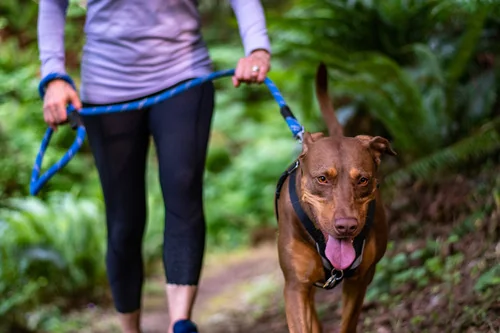Heatstroke is a serious condition that can affect dogs during the hot summer months. As temperatures rise, it’s crucial to be aware of the risks and know how to keep your dog safe. At Palos Animal Hospital, we’re here to help you understand dog heatstroke, its symptoms, prevention methods, and what to do if you suspect your dog is suffering from it. Call us at (708) 448-6600 if you have any concerns about your dog’s health during the summer.

What is Dog Heatstroke?
Dog heatstroke occurs when a dog’s body temperature rises to a dangerous level, usually above 103°F (39.4°C), due to excessive heat. Dogs cannot regulate their body temperature as effectively as humans, making them more susceptible to heat-related illnesses. When a dog’s body overheats, it can lead to organ failure and even death if not addressed promptly. Heatstroke can occur within minutes of exposure to high temperatures or vigorous activity in hot weather. It’s essential to recognize the signs and act quickly to protect your dog’s health.
What Does Heatstroke Look Like in Dogs
Recognizing the symptoms of dog heatstroke is crucial for early intervention. Symptoms can vary depending on the severity but typically include:
- Excessive Panting
- Drooling
- Red or Pale Gums
- Rapid Heartbeat
- Weakness or Stumbling
- Vomiting or Diarrhea
- Collapse
Causes of Dog Heatstroke
Understanding what causes dog heatstroke can help you prevent it. Common causes include:
- High Temperatures: Hot weather, especially when combined with high humidity, increases the risk of heatstroke.
- Lack of Shade or Water: Dogs left without access to shade or water are more likely to overheat.
- Overexertion: Vigorous exercise in hot weather can quickly lead to heatstroke.
- Hot Surfaces: Walking on hot pavement or sand can increase a dog’s body temperature.
- Enclosed Spaces: Leaving a dog in a parked car, even for a short time, can be deadly.
Prevention of Dog Heatstroke
Preventing dog heatstroke involves taking proactive measures to keep your dog cool and safe. Here are some tips to help you prevent heatstroke in your dog:
- Ensure your dog has access to fresh, cool water at all times.
- Make sure your dog has a shaded area to rest in when outside.
- Walk your dog during cooler parts of the day, such as early morning or late evening.
- Never leave your dog in your car. Even with windows cracked, temperatures inside cars can rise quickly.
- Reduce your dog’s activity level during hot weather.
- Consider using cooling vests, mats, or bandanas to help keep your dog cool.
What to Do if Your Dog Has Heatstroke
If you suspect your dog is suffering from heatstroke, it’s important to act quickly. Immediately take your dog to a shaded or air-conditioned area. Allow your dog to drink small amounts of cool water. Use cool (not cold) water to wet your dog’s body, focusing on the head, neck, and chest. Avoid using ice-cold water, as it can cause shock. If possible, use fans to help cool your dog. Call Palos Animal Hospital at (708) 448-6600 for immediate advice and bring your dog in for professional care.
Risks and Complications of Dog Heatstroke
Dog heatstroke can lead to serious complications if not treated promptly. Potential risks and complications include organ damage, brain swelling, blood clotting issues, or shock. Early detection and treatment are vital to minimize these risks and ensure a full recovery.
Long-term Effects of Heatstroke
While some dogs recover fully from heatstroke, others may experience long-term effects. These can include:
- Increased Sensitivity to Heat: Dogs that have suffered heatstroke may be more prone to overheating in the future.
- Chronic Organ Damage: Damage to organs such as the liver or kidneys may have lasting effects.
- Behavioral Changes: Some dogs may exhibit changes in behavior or energy levels after recovering from heatstroke.
It’s essential to monitor your dog closely after a heatstroke incident and follow your veterinarian’s recommendations for ongoing care.
Frequently Asked Questions about Dog Heatstroke
How Can I Tell If My Dog Is Too Hot?
Signs that your dog is too hot include excessive panting, drooling, and seeking cool surfaces. If your dog seems uncomfortable, it’s important to take steps to cool them down.
Can All Dogs Get Heatstroke?
Yes, all dogs are susceptible to heatstroke, but some breeds and individual dogs are at higher risk. Brachycephalic breeds (dogs with short noses) and dogs with thick fur or underlying health conditions are more vulnerable.
How Quickly Can Heatstroke Occur?
Heatstroke can occur within minutes, especially in extreme temperatures or confined spaces like cars. Always monitor your dog closely during hot weather and take preventive measures.
Protecting Your Dog from Heatstroke
Dog heatstroke is a serious and potentially life-threatening condition that requires immediate attention. By understanding the symptoms, causes, and prevention methods, you can help keep your dog safe during the hot summer months. If you ever suspect your dog is suffering from heatstroke, act quickly and seek veterinary care. For any concerns or questions about your dog’s health, call Palos Animal Hospital at (708) 448-6600. Your dog’s well-being and safety are our priority.


